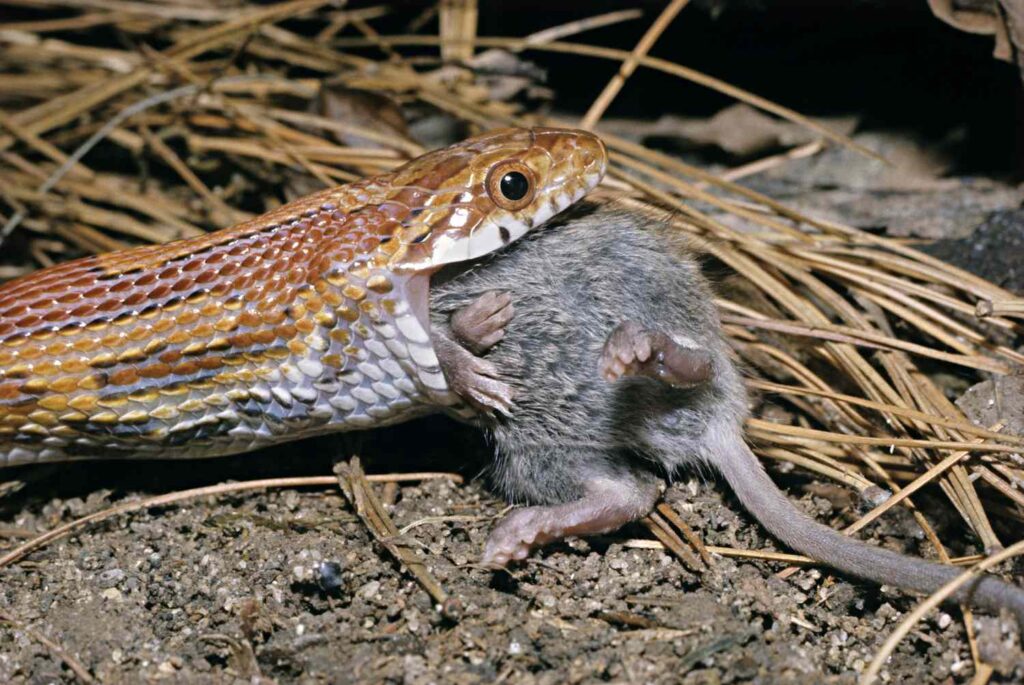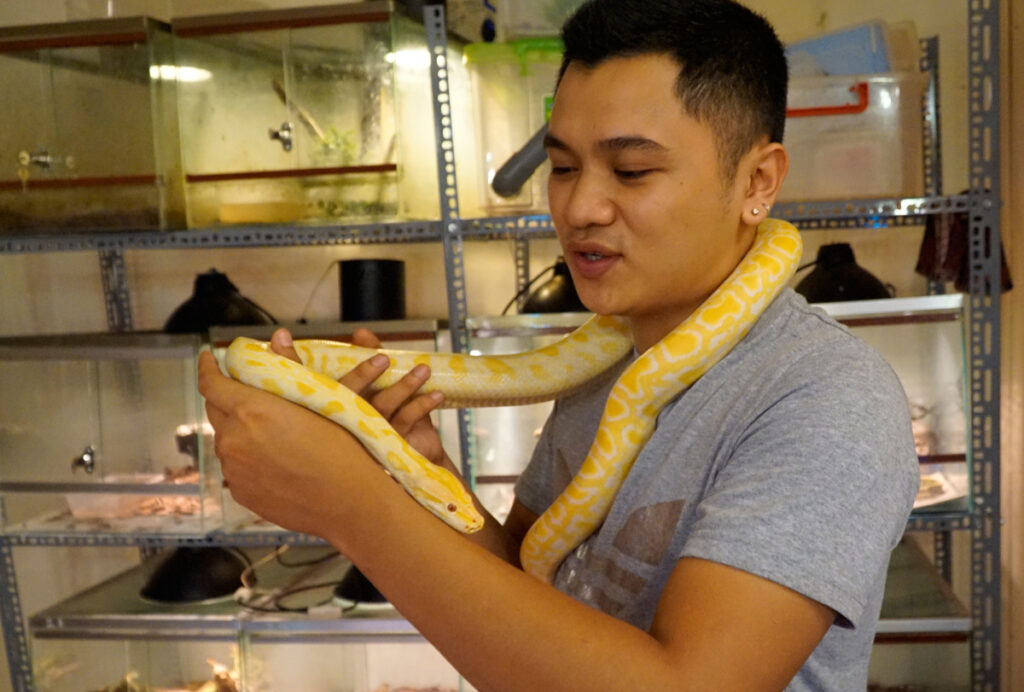Snake food is very diverse. Although they are carnivores and predators, that does not mean that you can give them food in an unscientific way. Feeding snakes is extremely important, it determines their development. Article What Food Is Poisonous To Snakes? will help you better understand the foods when feeding snakes.
Factors affecting the process of feeding snakes
Several factors can affect the process of feeding snakes:
The snake’s age: Younger snakes may need to be fed more frequently than adults, as they are still growing and have higher nutritional needs.
The snake’s size: Larger snakes will require more food than smaller ones.
The snake’s species: Different species of snakes have different dietary requirements, so it’s important to research the specific needs of your snake.

The snake’s health: If a snake is sick or recovering from an injury, it may have different feeding requirements than a healthy snake.
The snake’s appetite: Some snakes may be more or less interested in eating at certain times. It’s important to monitor your snake’s appetite and adjust feeding accordingly.
The type of food being offered: Different types of food (such as live prey versus pre-killed prey) can affect a snake’s feeding behavior.
The snake’s environment: The temperature and humidity of the snake’s enclosure can affect its appetite and digestion.
It’s important to carefully consider all of these factors when feeding your snake to ensure that they are receiving proper nutrition.
Snake behavior
Day-living snakes: Some snake species have a habit of living during the day (Example: Yellow-tailed snake – Elaphe taeniura), for this type of snake, feeding should be done in the morning or noon. . Because at this time they are quite active, the frequency of activity is high and equivalent to that, they have more energy. Therefore morning and noon are suitable times for feeding.
Snakes live at night: Many species of snakes the fauna live at night, during the day they hide in crevices and corners to rest. With this type of snake, owners need to pay close attention, and during the day try not to feed them or disturb them. The snake’s food should be used in the afternoon or evening (the same reason for snakes that are active during the day), better for snakes to eat.
Snake type
Because the species of snakes are very diverse, their suitable habitats also have certain differences. Specifically divided into arboreal snakes, terrestrial snakes, and semi-aquatic snakes. Based on the different species, have their habitat requirements.
Before the start of feeding is the convalescence period. The design of the environment is the first important issue, creating a comfortable living environment for snakes will be more beneficial for breeding later. This is a follow-up to What Food Is Poisonous To Snakes?
Temperature

Snakes are very sensitive to temperature, changes in temperature, too high or too low, and too large temperature amplitude will affect the snake’s food and eating situation. Therefore, stable temperature control is the foundation for snake farming.
Humidity
Humidity is also an important issue. A lot of owners take this lightly, but starting a snake farm has a lot to do with your humidity control. Too much humidity is easy to cause snakes to get sick (skin diseases, rashes, pneumonia, stomatitis …) all have certain effects on the snake’s eating problem.
The bottom line is a lot of snakes after soaking in water for a long time. When returning, being placed in a relationship with a high-humidity environment will greatly affect the health of the snake. Therefore, it is understandable that they stop eating. Although the snake’s food is not a problem.
Food suitable for snakes
The type of food that is suitable for a snake depends on the species of the snake. Most snakes are carnivorous, which means that they primarily eat other animals. In the wild, snakes typically eat a variety of prey, including rodents, birds, and other small animals.
In captivity, snakes can be fed pre-killed prey or live prey, depending on the preference of the snake and the owner. This is a follow-up to What Food Is Poisonous To Snakes?

Some common types of food that can be fed to snakes include:
Rodents: Mice and rats are a common food source for snakes. It’s important to select prey that is appropriately sized for the snake, as feeding a snake prey that is too large can cause health problems.
Birds: Some snakes, such as kingsnakes and rat snakes, will eat birds in the wild. In captivity, chicks or quail can be offered as food.
Fish: Some species of snakes, such as water snakes and garter snakes, will eat fish.
Insects: Some species of snakes, such as hognose snakes and garter snakes, will eat insects as a part of their diet.
It’s important to research the specific dietary needs of your snake and offer a varied diet to ensure that they are receiving all of the nutrients they need. It’s also important to avoid feeding your snake prey that is contaminated with pesticides or other chemicals, as this can be harmful to the snake.
Note when feeding snakes
Here are some things to keep in mind when feeding snakes:
Research the specific dietary needs of your snake: Different species of snakes have different nutritional requirements. It’s important to research the specific needs of your snake and provide a diet that meets those requirements.
Offer a varied diet: Most snakes benefit from a varied diet that includes a range of prey items. This can help ensure that they are receiving a balanced intake of nutrients. This is a follow-up to What Food Is Poisonous To Snakes?
Use caution when feeding live prey: If you choose to feed your snake live prey, use caution to avoid getting bitten or scratched. It’s also important to ensure that the prey is not able to escape or harm the snake.
Observe the snake’s appetite: Some snakes may be more or less interested in eating at certain times. It’s important to monitor your snake’s appetite and adjust feeding accordingly.
Avoid overfeeding: It’s important not to overfeed your snake, as this can lead to obesity and other health problems.
Feed in a separate enclosure: It’s a good idea to feed your snake in a separate enclosure to avoid any accidental escapes or injuries during feeding time.
Wash your hands before and after handling prey: To prevent the spread of disease, it’s important to wash your hands before and after handling prey or coming into contact with your snake’s food. This is a follow-up to What Food Is Poisonous To Snakes?
Conclusion
Although snakes are predatory animals, if you have snakes in your family, you need to do thorough research on their food sources. Each snake species will have different food needs. Hope the article What Food Is Poisonous To Snakes? will provide you with useful information.

